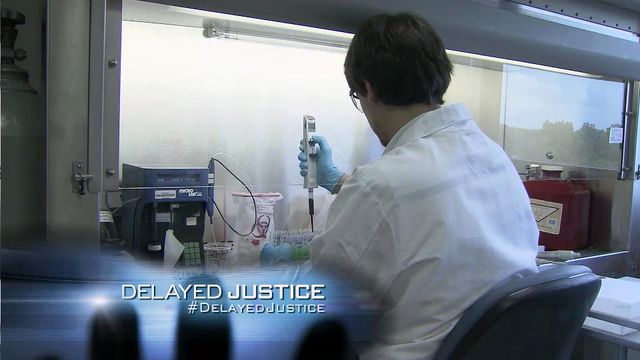NC Crime Lab takes steps to ease caseloads but funding woes remain
The North Carolina State Crime Laboratory has taken steps to help clear a backlog of evidence awaiting testing but its biggest problem persists - having enough funding to retain analysts who are taking higher-paying jobs.
Posted — UpdatedSince 2010, the lab has lost more than 70 scientists, including two who recently left to fill openings at a locally run, publicly funded laboratory.
"Both of those positions have been filled, and they've been filled by employees of the State Crime Laboratory who got a nice $20,000-a-year raise to go," former Judge Joe John said this week. "You can't blame them."
John said persuading state lawmakers to fund pay raises is important in the upcoming legislative session.
"Things are going to get better, but they're never going to be really, really good until we can maintain a stable workforce," John said. "The only way to do that is to pay our folks."
State budget appropriations over the past few years have resulted in funding for a new crime lab in the western part of the state, 11 new DNA analysts and 19 new toxicology scientists. But, John said, employees keep leaving for better pay.
In one case, he added, the state spent $114,000 training a scientist who left before ever working on an actual case.
Better training and new protocols, however, have improved the workload.
One of the biggest impacts in the lab, John said, is bringing corporate workflow ideas into the science of fighting crime and streamlining how analysts work.
"From something just as simple as having a pen at your desk rather than having to go to the next desk, get up, go get and come back. And you repeat that action 10 times a day by the number of employees you have and you come up with a striking amount of time for something very, very simple."
Lab directors used that same philosophy when meeting with Superior Court judges to get analysts on the witness stand quickly when they have to testify in trials so that they don't spend unnecessary time waiting in courtrooms.
While examining every aspect of how the lab worked, leaders also found several examples where scientists spent time testing evidence in criminal cases that had already been resolved. In many of those cases, the prosecutor never let the crime lab know.
The lab installed new software that better compares pending evidence with court records. If that software flags a case that is closed, the lab contacts the prosecutor to confirm before removing the evidence from its list of pending cases.
"It is well worth the truly minimal time that we spend in that process, as opposed to all of our scientists – of whom there are a limited number – working cases unnecessarily,” John said.
The lab also added new robotic testing capabilities in areas of toxicology and DNA analysis that is more sensitive and faster.
For example, a blood test for marijuana used to take an analyst 45 minutes to test. The machine can do it in seven minutes.
"We are still working our folks to the max," he said. "We're getting the most out that we can out of the resources we have."
• Credits
Copyright 2024 by Capitol Broadcasting Company. All rights reserved. This material may not be published, broadcast, rewritten or redistributed.






